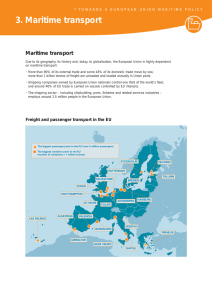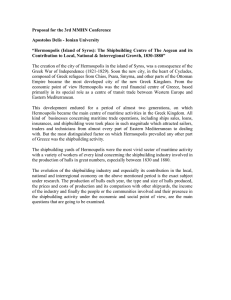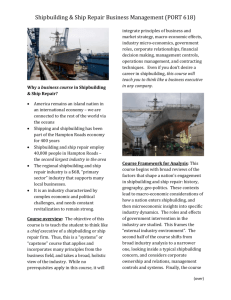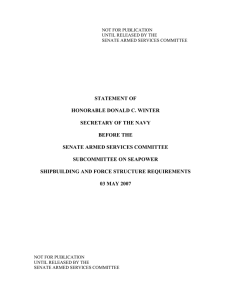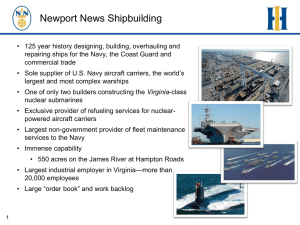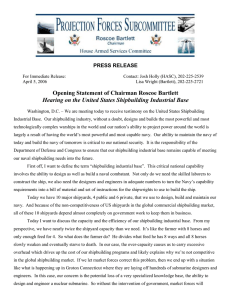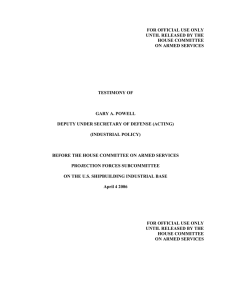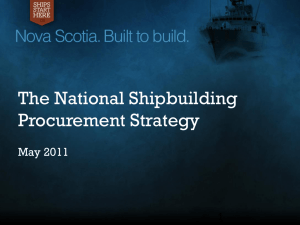Modern shipbuilding
advertisement
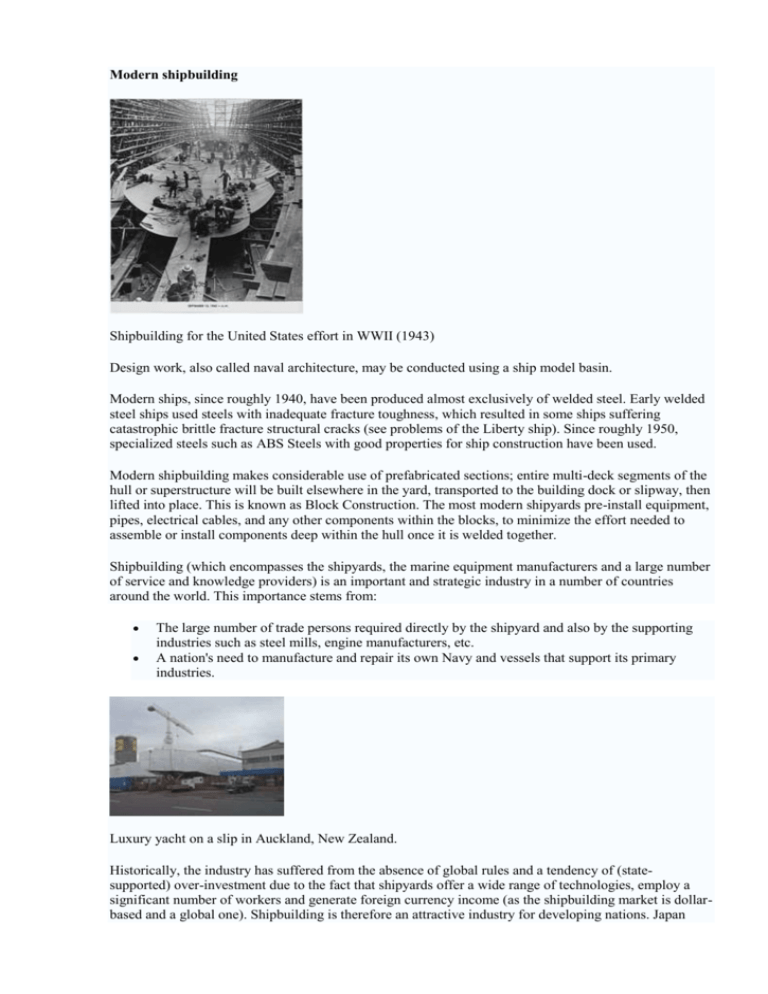
Modern shipbuilding Shipbuilding for the United States effort in WWII (1943) Design work, also called naval architecture, may be conducted using a ship model basin. Modern ships, since roughly 1940, have been produced almost exclusively of welded steel. Early welded steel ships used steels with inadequate fracture toughness, which resulted in some ships suffering catastrophic brittle fracture structural cracks (see problems of the Liberty ship). Since roughly 1950, specialized steels such as ABS Steels with good properties for ship construction have been used. Modern shipbuilding makes considerable use of prefabricated sections; entire multi-deck segments of the hull or superstructure will be built elsewhere in the yard, transported to the building dock or slipway, then lifted into place. This is known as Block Construction. The most modern shipyards pre-install equipment, pipes, electrical cables, and any other components within the blocks, to minimize the effort needed to assemble or install components deep within the hull once it is welded together. Shipbuilding (which encompasses the shipyards, the marine equipment manufacturers and a large number of service and knowledge providers) is an important and strategic industry in a number of countries around the world. This importance stems from: The large number of trade persons required directly by the shipyard and also by the supporting industries such as steel mills, engine manufacturers, etc. A nation's need to manufacture and repair its own Navy and vessels that support its primary industries. Luxury yacht on a slip in Auckland, New Zealand. Historically, the industry has suffered from the absence of global rules and a tendency of (statesupported) over-investment due to the fact that shipyards offer a wide range of technologies, employ a significant number of workers and generate foreign currency income (as the shipbuilding market is dollarbased and a global one). Shipbuilding is therefore an attractive industry for developing nations. Japan used shipbuilding in the 1950s and 1960s to rebuild its industrial structure, Korea made shipbuilding a strategic industry in the 1970s and China is now in the process to repeat these models with large statesupported investments in this industry. As a result the world shipbuilding market suffers from overcapacities, depressed prices (although the industry experienced a price increase in the period 2003–2005 due to strong demand for new ships which was in excess of actual cost increases), low profit margins, trade distortions and wide-spread subsidisation. All efforts to address the problems in the OECD have so far failed, with the 1994 international shipbuilding agreement never entering into force and the 2003– 2005 round of negotiations being paused in September 2005 after no agreement was possible. Where state subsidies have been removed and domestic policies do not provide support, in high cost nations shipbuilding has usually gone into steady, if not rapid, decline. The British shipbuilding industry is one of many examples of this. From a position in the early 1970s where British yards could still build the largest types of sophisticated merchant ships, British shipbuilders today have been reduced to a handful specialising in defence contracts and repair work. In the U.S.A., the Jones Act (which places restrictions on the ships that can be used for moving domestic cargoes) has meant that merchant shipbuilding has continued, but such protection has failed to penalise shipbuilding inefficiencies. The consequence of this is newbuilding contract prices that are far higher than those of any other nation building oceangoing ships. Thanks to the superior quality and productivity of its shipyards, South Korea is the world's largest shipbuilding nation in terms of tonnage and numbers of vessels built, in spite of high labour costs. China is currently the third largest shipbuilding country and poised to overtake Japan in the near future.
